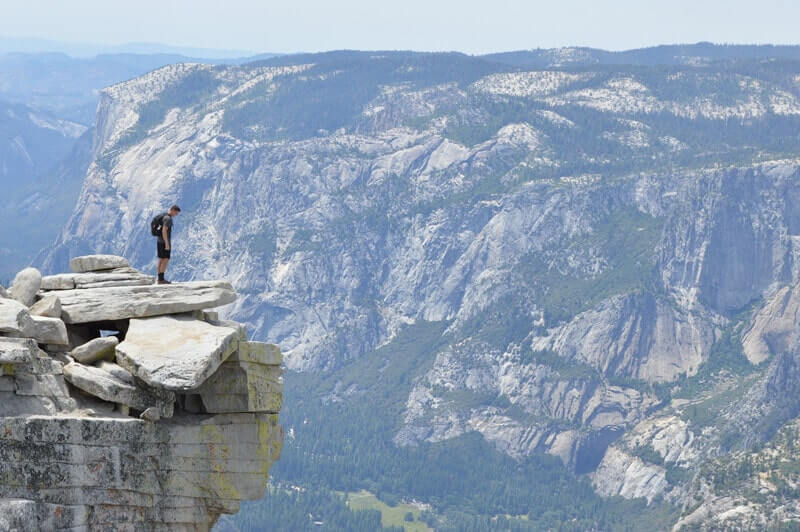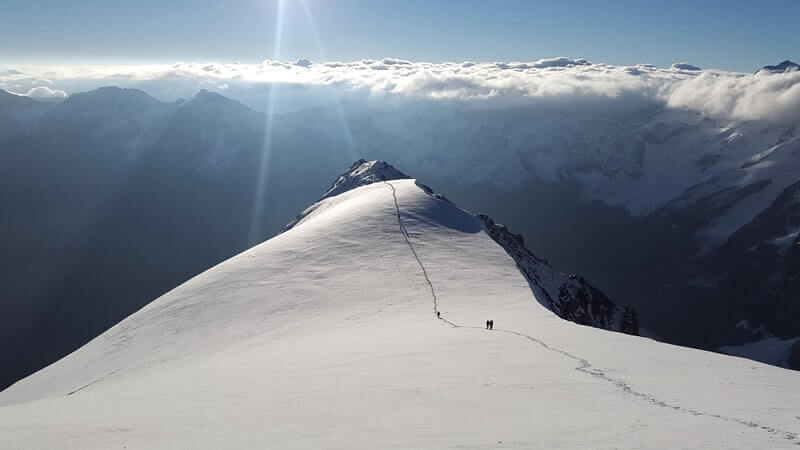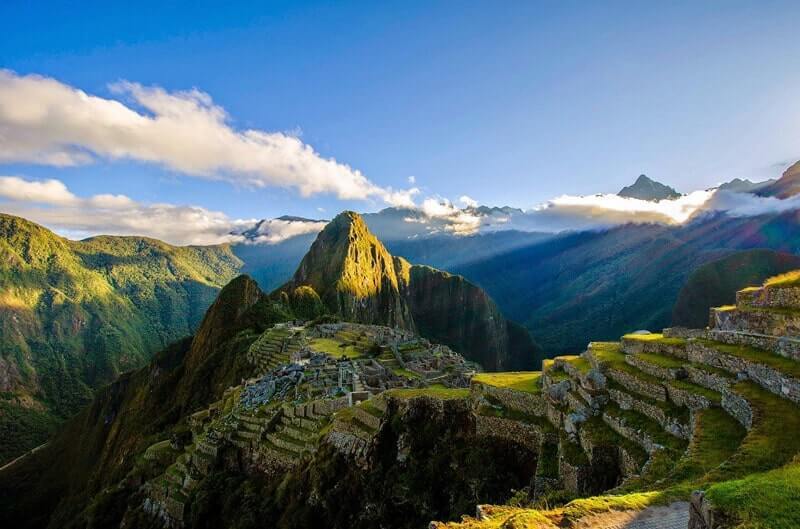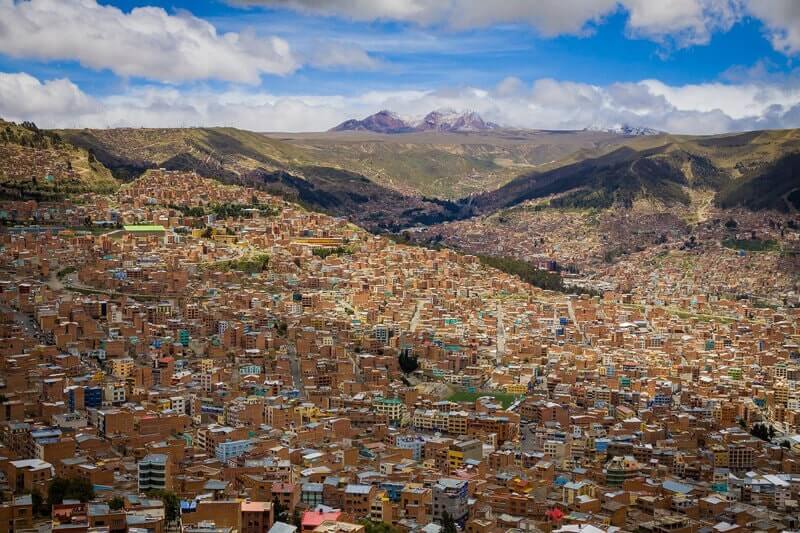 Although this article is written for people visiting South America, the information applies to anyone going up high whether it be climbing in the Alps, Himalayas, Andes or elsewhere in the world. Please seek medical advice if you have any concerns about altitude and related health issues.
Although this article is written for people visiting South America, the information applies to anyone going up high whether it be climbing in the Alps, Himalayas, Andes or elsewhere in the world. Please seek medical advice if you have any concerns about altitude and related health issues.
Anyone visiting Peru or Bolivia is likely to be going high and needs to be aware of the effect of altitude on the body and make allowance for it when planning an itinerary. These notes have been written after the writer (a keen Silver Traveller) spent time at altitudes of up to 5000m in both Bolivia and northern India.
Acute Mountain Sickness (AMS) can and does kill. Altitude can affect anyone regardless of age, sex or general fitness. The degree of severity can vary and some people are affected at lower altitudes than others. Most people acclimatise quickly at around 2500m and altitude isnt usually a problem until 3000+m. It can be a major problem if you change altitude rapidly. A daily increase of more than 500m can cause problems.
Even at 2500m many people will experience minor symptoms of breathlessness and headache (treat with paracetamol or ibuprofen). These usually disappear within 24 hours.
General advice is to take things gently on the first couple of days and do little. Any exercise will leave you puffing and steps or climbs are a real killer (no pun intended). Bending down isnt a problem but standing up afterward can be. Be sensible and take things steadily. Remember to rest and take your time. DON’T rush! Think before getting out of a car, as in your excitement to see the view or take the fascinating photo it is very easy to forget the altitude.
If you do experience problems or mild symptoms last for more than a few days you may need to think seriously about going down – even 500m will help. If climbing there is the incentive to get to the top, it can be a big disappointment not to achieve this.
 Make sure you can recognise the effects of AMS, both High Altitude Pulmonary Oedema (HAPE) and High Altitude Cerebral Oedema (HACE). These are serious and immediate action needs to be taken. (For more information see the web links listed at the end of this article.)
Make sure you can recognise the effects of AMS, both High Altitude Pulmonary Oedema (HAPE) and High Altitude Cerebral Oedema (HACE). These are serious and immediate action needs to be taken. (For more information see the web links listed at the end of this article.)
Dont be big and brave and hope it may go away. It wont. Make sure your travel insurance covers you for emergency evacuation and air lift if it is needed.
As there is less oxygen at high altitudes you will be breathing more and may need to drink more to replace fluid lost through the lungs when breathing. BUT dont drink too much water as this can collect in the lungs and there is a danger of drowning. Think twice before drinking alcohol as this can increase the side effects of altitude – even as little as one drink… Smoking is also bad.
People often feel less hungry at altitude. Eat smaller meals but more often if necessary. Blood goes to the stomach after a meal to help digestion, so a large meal not only slows you down it can also leave you lethargic and a bit headachy.
You are likely to feel tired and need more sleep.
Some people find it more difficult to sleep at altitude or they wake feeling they can’t breathe. If this is the case, think about breathing and make yourself take deep regular breaths until your natural breathing pattern is restored. Propping yourself up in bed with lots of pillows can help rather than lying flat, or try sleeping in a comfortable chair.
Some people take diamox to help with altitude. Talk to your doctor first as it can interact with drugs you may be taking and some GPs are not happy with its use.
Cars may carry oxygen, but this is only a short term measure.
Coca tea is widely available and supposed to help the side effects of altitude. In Bolivia the Indians chew coca leaves, which act as a stimulant and appetite suppressant. Leaves are on sale everywhere. DO NOT attempt to bring either leaves or tea bags back home as Customs will get very upset.
Visiting Peru
 Most trips will include a visit to Cusco at an altitude of 3395m. It makes sense to try and spend some time around 2300-25000m for a few days first to help with acclimatisation.
Most trips will include a visit to Cusco at an altitude of 3395m. It makes sense to try and spend some time around 2300-25000m for a few days first to help with acclimatisation.
Some itineraries spend several days around Arequipa first at 2380m. Alternatively, there is an case for visiting Sacred Valley and Macchu Pichu (2430m) first to help acclimatise before moving on to Cusco.
Lake Titicaca is 3827m so after a few days in Cusco there should be no problems.
Visiting Bolivia
 Apart from the Amazon basin, much of Bolivia visited by tourists is at an altitude of 3500-4000m. Flying into La Paz airport at 4061m and then starting off on a full itinerary of activities is not a good idea. If possible plan your visit so that you ascend slowly, spending several days around 2500m before heading for the really high stuff.
Apart from the Amazon basin, much of Bolivia visited by tourists is at an altitude of 3500-4000m. Flying into La Paz airport at 4061m and then starting off on a full itinerary of activities is not a good idea. If possible plan your visit so that you ascend slowly, spending several days around 2500m before heading for the really high stuff.
If entering Bolivia via Chile, try and spend a few nights in San Pedro de Atacama (2407m). Day trips to the altiplano lagoons (around 4200m) or El Tatio Geysers (4320m) are good preparations for the Bolivia salt flats with altitudes up to nearly 5000m. If flying into La Paz, plan to visit Sucre (2750m) first.
Useful Links
Altitude Sickness
International Society of Mountain Medicine
Silver Travel Advisor is sharing these links for your interest, the company does not necessarily endorse the views or information contained in them.











